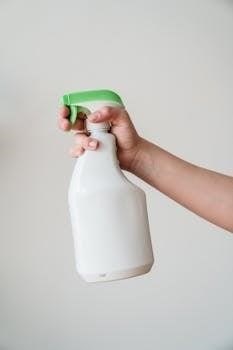Tommee Tippee Bottle Warmer Instructions Manual⁚ A Comprehensive Guide
This comprehensive guide is designed to provide you with detailed instructions and essential information for safely and effectively using your Tommee Tippee bottle warmer. Follow these instructions carefully to ensure optimal performance and safety for your baby.
Tommee Tippee bottle warmers are designed to provide a safe, quick, and convenient way to warm breast milk, formula, and baby food. These warmers ensure that your baby’s meals are heated to the perfect temperature, preserving essential nutrients while eliminating hot spots that can occur with microwave heating.
These bottle warmers are compact and portable, making them ideal for home use and travel. They are compatible with a wide range of bottles and pouches, including Tommee Tippee’s Closer to Nature bottles and Express and Go pouches. The easy-to-use control dial allows you to adjust the temperature settings according to your needs, ensuring consistent and reliable warming every time.
Whether you’re a new parent or an experienced caregiver, understanding how to properly use your Tommee Tippee bottle warmer is crucial for your baby’s health and safety. This manual will guide you through each step, from initial setup to cleaning and maintenance, ensuring that you get the most out of your bottle warmer.
Safety Precautions
Before using your Tommee Tippee bottle warmer, it is essential to understand and follow all safety precautions to prevent accidents and ensure the well-being of your child. Always keep the warmer and its plug out of the reach of small children. Close supervision is necessary when the appliance is used near children;

Never immerse the bottle warmer, cord, or plug in water or any other liquid to avoid electrical shock. Ensure that the bottle warmer is placed on a flat, heat-resistant surface away from hot gas or electric burners and heated ovens. Before plugging in the warmer, verify that the voltage is compatible with your electricity supply.
Always add water to the warmer before switching it on, and never allow the water to overflow or rise above the neck of the bottle. Extreme caution must be used when moving the appliance containing hot water and steam. Do not touch hot surfaces; use handles and knobs. Regularly inspect the cord and plug for damage, and do not use the appliance if it malfunctions or has been damaged.
Preparing the Warmer for Use
Before you begin using your Tommee Tippee bottle warmer, proper preparation is key to ensuring safe and efficient operation. Start by placing the bottle warmer on a clean, dry, and stable surface in your kitchen or feeding area. Ensure that the surface is heat-resistant, as the warmer will generate heat during use.
Inspect the warmer for any visible damage, such as cracks or frayed cords. Do not use the warmer if any damage is detected. Before plugging in the warmer, make sure it is switched to the “0” setting or turned off completely.
Next, fill the warmer with water to the appropriate level. The water level should be approximately 10mm below the rim of the warmer. Use a clean jug or bottle to pour water into the warmer. It is important never to let the water overflow or rise above the neck of the bottle when it is placed inside. Ensure the water level is lower than the rim of any food jars you intend to warm. With these steps completed, your Tommee Tippee bottle warmer is now ready for use.
Warming Bottles⁚ Step-by-Step Instructions
To safely and effectively warm bottles using your Tommee Tippee bottle warmer, follow these step-by-step instructions. Begin by ensuring the warmer is properly prepared, as detailed in the previous section.
Place the filled bottle into the warmer. If using a Tommee Tippee bottle, ensure the bottle hood is on. Next, select the appropriate setting on the warmer based on the size and starting temperature of the milk. Refer to the heating guidelines in the manual for the correct settings and timings. These guidelines will help prevent overheating and ensure the milk reaches the desired temperature.
The amber light will illuminate, indicating that the warmer is heating. The light will switch off once the water is heated to the thermostat’s set temperature, but this does not mean the milk is ready. Heat the milk for the recommended time, then carefully remove the bottle, as the surrounding water will be hot. Always test the milk temperature on your wrist before feeding to ensure it is safe for your baby.
Warming Food Jars⁚ Step-by-Step Instructions

To warm food jars effectively using your Tommee Tippee bottle warmer, follow these detailed steps for safe and consistent results. First, remove the lid from the food jar before placing it in the warmer. This allows the heat to penetrate the food evenly and prevents pressure buildup inside the jar.
Place the open jar inside the bottle warmer. Fill the warmer with water to approximately 10mm below the rim, ensuring the water level remains lower than the jar’s rim to prevent water from entering the food. Select the appropriate setting based on the food jar size and the food’s initial temperature. Consult the heating guidelines in your manual for recommended settings.
Once the warming cycle is complete, carefully remove the jar, as the surrounding water will be hot. Stir the food thoroughly to distribute heat evenly. Always test the food’s temperature on a sensitive part of your skin, such as your wrist, before feeding your baby. Ensure the food is warm, not hot, to prevent burns.
Heating Guidelines and Temperature Settings
Understanding the heating guidelines and temperature settings of your Tommee Tippee bottle warmer is crucial for safely warming milk or food. These guidelines ensure that the contents reach the desired temperature without overheating, preserving essential nutrients and preventing burns.
The appropriate settings depend on several factors, including the initial temperature of the milk or food, the volume, and the type of container used. Refer to the comprehensive chart in your instruction manual for precise settings based on these variables. Generally, lower settings are suitable for smaller volumes or room-temperature contents, while higher settings are necessary for larger volumes or colder contents.
Always start with the lowest recommended setting and gradually increase if needed, checking the temperature frequently. Remember that the warmer maintains the water temperature, so removing the bottle or jar promptly once heated is essential to prevent overheating. Use a thermometer to verify the temperature if necessary, ensuring it is evenly heated and safe for your baby.
Cleaning and Maintenance
Regular cleaning and maintenance are essential to keep your Tommee Tippee bottle warmer functioning efficiently and hygienically. Proper care prevents mineral buildup, ensures consistent performance, and extends the lifespan of your appliance.
Before cleaning, always unplug the warmer and allow it to cool completely. Pour away any remaining water after each use to prevent stagnation and mineral deposits. Wipe the interior with a damp cloth to remove residue. Avoid abrasive cleaners, solvents, or harsh chemicals that could damage the unit.
For exterior cleaning, use a soft, damp cloth. Ensure no water enters the electrical components. The warmer should be descaled every four weeks to remove mineral deposits from the heating element. Descaling instructions are detailed in a separate section.
Regular maintenance ensures that your bottle warmer operates effectively and safely. By following these simple steps, you can maintain optimal performance and ensure your baby’s milk and food are warmed properly every time. This routine also contributes to the longevity of the device.
Descaling Instructions
Descaling your Tommee Tippee bottle warmer every four weeks is crucial for maintaining its efficiency. Mineral deposits from water can accumulate over time, affecting the warmer’s performance and potentially causing it to malfunction. Follow these steps to effectively descale your unit⁚
- Empty the warmer completely and wipe the interior with a damp cloth or sponge to remove any loose residue.
- Pour in a descaling solution. You can use a commercially available descaler suitable for baby equipment or a mixture of white vinegar and water (equal parts).
- Turn the warmer on and let it run for approximately 5 minutes. This allows the descaling solution to loosen mineral buildup.
- Unplug the unit and allow it to cool down completely. Then, pour the remaining liquid down the sink.
- Rinse the interior thoroughly with cool water to remove any traces of the descaling solution. Use a clean sponge or damp cloth to wipe away any remaining buildup.
- Add regular amounts of water. Turn on and run for 5 minutes to remove any additional build up. Upon completion, rinse warmer again.

Troubleshooting Common Issues
Even with careful use, you might encounter some common issues with your Tommee Tippee bottle warmer. Here are a few problems and their potential solutions⁚
- Warmer not heating⁚ Ensure the unit is plugged in securely and the power switch is on. Check the water level; it should be at the correct level. If the warmer still doesn’t heat, it may require descaling.
- Milk/food overheating⁚ Make sure you’re following the recommended heating guidelines and temperature settings. Remove the bottle or jar immediately once it reaches the desired temperature. Always test the temperature before feeding.
- Water leaking⁚ Avoid overfilling the warmer. The water level should not exceed the recommended fill line. Check for any cracks or damage to the unit.
- Unit turning off prematurely⁚ The warmer may have overheated. Allow it to cool down completely before attempting to use it again. Ensure proper ventilation around the unit.
- Strange odors⁚ Descale the warmer as described in the descaling instructions. Ensure you are using clean water.
Compatibility with Tommee Tippee Bottles and Pouches
The Tommee Tippee bottle warmer is designed with compatibility in mind, working effectively with a wide range of bottles and pouches, especially those from the Tommee Tippee Closer to Nature and Express and Go ranges. The warmer’s design accommodates various bottle sizes and shapes, ensuring even and efficient warming.
Specifically, the Closer to Nature bottles fit seamlessly into the warmer, allowing for easy placement and removal. The Express and Go pouches, designed for breast milk storage, are also compatible, making it convenient to warm milk directly from the pouch. Most other brands of bottles and breast milk pouches can be used in the Tommee Tippee warmer;

When using non-Tommee Tippee bottles or pouches, ensure they fit securely within the warmer and that the water level remains below the rim of the container to prevent overflow. Always follow the heating guidelines and test the temperature of the milk or food before feeding your baby, regardless of the bottle or pouch type.
Additional Tips and Considerations
To maximize the effectiveness and longevity of your Tommee Tippee bottle warmer, consider these additional tips. Always ensure the warmer is placed on a flat, heat-resistant surface to prevent accidents. Regularly descale the warmer every four weeks to maintain its efficiency and prevent mineral buildup. Use a descaling solution or a mixture of white vinegar and water, following the descaling instructions carefully.
When warming breast milk, be mindful of overheating. Breast milk should be warmed gently to preserve its nutrients. Avoid using the highest temperature settings unless necessary. Always check the temperature of the milk or food on your wrist before feeding to ensure it is not too hot.
Never leave the bottle warmer unattended while in use. Unplug the unit after each use and allow it to cool completely before cleaning or storing. If you encounter any issues, refer to the troubleshooting section of the manual or contact Tommee Tippee customer support for assistance. Proper usage and maintenance will ensure your bottle warmer remains a safe and reliable tool for feeding your baby.
